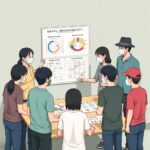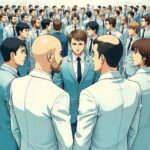Reader’s Question:
I recently finished the final episode of Gundam and have a question about Zieg Aks. While watching some explanation videos, I came across multiple prequels related to Zieg Aks. What exactly does “prequel” mean in this context? Is it something like a parallel world to the main story? I’m
getting a bit confused about the timeline as well. If possible, could someone explain this to me?
Understanding the Concept of Prequels in the Gundam Universe
The Gundam franchise, with its intricate narratives and expansive universe, has captivated audiences for decades. Among its many fascinating elements, the concept of prequels, particularly in relation to Zieg Aks, presents a unique and often complex layer of storytelling. As you have observed, discussions surrounding the timeline and the nature of these prequels can be quite confusing. This response will delve into the meaning of prequels in this context, explore the implications for the narrative, and provide insights into the psychological development of characters involved.
The Nature of Prequels
In storytelling, a prequel is typically defined as a narrative that takes place before the events of the original story. It introduces characters, settings, or events that occur prior to the main plotline, thereby providing additional context and depth to the overarching narrative. In the case of Zieg Aks, prequels serve as a means to explore alternate timelines, character motivations, and the ramifications of choices made by pivotal characters. The notion of prequels does not inherently imply that they exist in a parallel world. While some narratives may adopt a multiverse approach, wherein different versions of characters exist in separate realities, many prequels operate within the same continuity as the original story. They can expand upon characters’ backstories and motivations, shedding light on their actions in the original narrative. In your question, you mentioned the idea that Zieg Aks could represent a necessary precursor to the events of the original timeline. This is a fascinating perspective, suggesting that the trials and tribulations faced by characters in Zieg Aks might inform the decisions made in the original Gundam universe. For instance, if we consider the character of Char Aznable (Shah), who meets a tragic fate in one timeline, and the potential interventions of characters like Lalah (Raraa), we can explore themes of sacrifice, redemption, and the burden of choice. Lalah’s repeated attempts to change the outcome—indicating a form of character development through suffering—raises questions about determinism and free will in character arcs.
Character Psychology: The Making of Protagonists and Antagonists
When analyzing characters like Char and Lalah, it is essential to consider their psychological motivations. Characters in the Gundam series often embody complex psychological profiles, making them relatable yet deeply flawed. Char, as a character, oscillates between being an antagonist and a tragic hero. His motivations—rooted in revenge, loss, and a desire for power—are shaped by his past experiences. In the original timeline, his confrontation with Amuro Ray is not just a battle of strength but also a conflict of ideologies. The actions taken by Lalah, who is drawn to both Char and Amuro, exemplify the psychological pull experienced by characters in high-stakes narratives. For viewers, understanding these characters’ psyche requires a deeper engagement with their backstories. In the prequels, we might witness Lalah’s despair following Char’s actions, leading her to explore alternate realities as a means of escaping her pain. This character development is compelling as it invites audiences to empathize with her struggles rather than merely viewing her as a plot device. Furthermore, the psychological concept of cognitive dissonance plays a significant role in how characters justify their actions. When Lalah chooses to support Char, she must reconcile her feelings of love with the consequences of his violent path. This internal struggle is a rich area for character development—one that can be explored more thoroughly in prequels.
Legal and Ethical Considerations in Storytelling
From a legal standpoint, the production of prequels and expansions to existing narratives raises various ethical questions. In the anime industry, intellectual property rights play a significant role in determining how stories and characters are developed and portrayed. Creators must navigate the fine line between drawing inspiration from existing works and producing derivative works that might infringe on original copyrights. This is particularly pertinent in franchises like Gundam, where numerous adaptations, spin-offs, and prequels exist. Moreover, ethical storytelling compels creators to treat their characters and narratives with integrity. In the case of Lalah and Char, the exploration of their relationship must be conducted with sensitivity, particularly given the emotional weight of their experiences. Audiences today are increasingly aware of the ethical implications behind character representation and the narratives crafted around them. This sensitivity is crucial not just from a legal perspective but also from a psychological one. The portrayal of trauma, interpersonal conflict, and moral ambiguity in narratives can have profound effects on the audience. Creators should be mindful of these elements as they develop prequels that explore complex themes.
Cultural Impact and Audience Engagement
The Gundam series, like many anime franchises, reflects broader cultural themes and societal issues. The exploration of prequels allows viewers to engage with these themes on a deeper level. For instance, the concept of war, the morality of conflict, and the implications of personal sacrifice resonate through both the original series and its prequels. As viewers, we often find ourselves drawn to the choices characters make, which reflects our own values and beliefs. Engaging with prequels provides an opportunity for fans to reinterpret existing narratives and consider the psychological complexities of characters in new ways. This engagement fosters a sense of community among fans, who often participate in discussions, theories, and debates about character motivations and plot developments. As a part-time employee in a judicial scrivener’s office, I have observed how narratives—whether in literature or anime—often mirror the complexities of real-life situations. The implications of choice, the ethical dilemmas faced by characters, and the psychological burdens carried by individuals can evoke real emotions. This connection is what often draws us into stories and keeps us invested in the characters’ journeys.
Practical Insights for Creators and Viewers
For creators, the development of prequels should be approached with a thoughtful consideration of the existing narrative. It is essential to maintain consistency in character portrayal while also exploring new dimensions. This requires a careful balance between innovation and fidelity to the original work. Writers can benefit from conducting thorough character studies to understand their motivations and backgrounds better. By delving into the psychological aspects of characters, creators can craft more nuanced stories that resonate with audiences on various levels. This might involve exploring themes of trauma, resilience, and redemption—elements that not only enrich the narrative but also offer real-life insights for viewers. For viewers, engaging with prequels can enhance the overall experience of the original story. By approaching these narratives with an open mind, audiences can appreciate the layers of complexity that come with exploring characters’ pasts. Additionally, discussing theories and interpretations with fellow fans can deepen understanding and appreciation of the overarching narrative. Ultimately, the exploration of prequels in the Gundam universe invites us to reflect on the nature of choice, the weight of history, and the psychological intricacies of character development. Whether creators are developing new stories or viewers are engaging with existing narratives, these elements remain central to the rich tapestry of storytelling.
Conclusion: Invitation to Share Experiences
In conclusion, the discourse surrounding prequels in the Gundam universe, particularly concerning Zieg Aks, opens a vast field of inquiry into character psychology, narrative ethics, and cultural impact. By considering the multifaceted nature of these narratives, both creators and audiences can engage in a more profound exploration of themes that resonate on personal and societal levels. I invite you, as an engaged fan and viewer, to share your reflections on the characters and narratives within the Gundam series. How have the prequels influenced your understanding of the original story? What themes resonate most with you? Engaging in these discussions enriches our collective appreciation of the art and impact of storytelling in anime and beyond.



